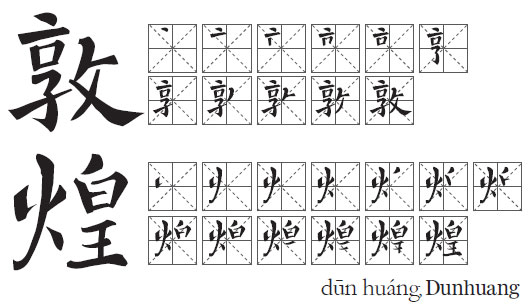Ancient words a treasure for the centuries
Dunhuang find includes earliest dated printed book
尘封千年一朝重现的敦煌经典
In the small oasis town of Dunhuang, on the edge of the Taklamakan Desert, there was a sacred, secret Buddhist text, a hidden piece of world history and a marvel of craftsmanship. For over a millennium it sat there, a jewel completely hidden from sight.
The book is lovingly dedicated: "Reverently made for universal free distribution by Wang Jie (王玠) on behalf of his two parents on the 15th of the 4th moon of the 9th year of Xiantong (May 11, 868)." This gift to his parents over a millennium ago turned out to be a gift to the world. Its historical significance cannot be overstated as it is, as the British Library describes it, "the earliest complete survival of a dated printed book." Little was Wang Jie to know that this simple filial gesture would become a devotional act that would echo for more than 1,000 years.

The initial discovery of what became known as The Dunhuang Manuscripts - a treasure trove of some of the most significant bibliographical finds in history, the Diamond Sutra merely being the centerpiece - was by a young Taoist monk, Wang Yuanlu, who saw himself as the caretaker of the Mogao Caves in Northwest China, or as they were then known The Caves of a Thousand Buddhas. Ever the vigilant custodian, in 1900 Wang was engaged in the amateur restoration of a few caves when he noticed his cigarette smoke shifting oddly in the wind, as if to drift to the back wall of one of the shrines.
Driven by curiosity, he knocked down the wall of what was essentially a sealed cave to discover tens of thousands manuscripts and silk paintings piled from the floor to the ceiling. The extent of this hidden treasure was truly remarkable - texts dating from the fifth to the 10th century, folk tales, musical scores, poems, essays, novels, tomes on Manicheanism, Christianity, Taoism and, of course, Buddhism. The range of languages were wide too, mainly Chinese and Tibetan, but also Hebrew, ancient Uyghur, and uncommon languages including Tangut, Sogdian and Khotanese.
Wang knew he had stumbled on to something special but he had no idea quite how spectacular the nature of the find was. After contacting the relevant officials, he found little support for the preservation of his find, surely the stuff of any bibliophile's dreams
Rumors of the magnificent discovery quickly traveled throughout the land. Traders, scholars, explorers, historians, travelers of the Silk Road, and anybody that thought they could make a quick buck were onto Wang. Among these was the ambitious Aurel Stein, a Hungarian-British archaeologist who was on his second tour across Central Asia. Upon hearing of the find, he rushed to Dunhuang in 1907, ready to do anything it took to get his hands on the precious manuscripts.
Wang was initially reluctant to give up the scrolls, but Stein, along with a little bribery, spun a tale of how he was actually following in the footsteps of Xuanzang, a famous Chinese pilgrim who made the arduous journey to India in search of ancient Buddhist texts. The tale seemed to work and Wang finally relented. Stein more or less had his pick of the loot and chose boxes worth of pieces. He was unable to read Chinese, so took those that looked in the best condition. At the time even Stein, a much-feted archeologist, did not realize the true value of what he had found.
Among Stein's haul it was the ancient Diamond Sutra that was the jewel in the crown, the earliest dated printed book in history-several hundreds of years older than the oldest Gutenberg Bible. The manuscript is printed on wood-block, in superb condition, and complete with dozens of elegant illustrations on strips of paper several meters long. And Stein got the whole lot for 130 pounds ($193; 176 euros).
Back home Stein was seen as a hero in the tradition of great explorers and was later knighted for his efforts. In China things were, of course, seen a little differently, and Chinese nationalists were quick to dub him a burglar and thief; they even staged protests against him.
The Chinese were not afraid to use colorful language to describe the whole affair. In 1961 the National Library of Peking, now the National Library of China, described the Dunhuang Diamond Sutra as "a famous scroll that was stolen over 50 years ago by the Englishman Ssu-t'an-yin (Stein) which causes people to gnash their teeth in bitter hatred". The sacred text remains in the British Library to this day.
As for the Dunhuang caves themselves, they remain a mystery: who or why it was decided to seal caves containing such magnificent manuscripts may never be fully known. There are few records of the caves or why they were closed off. In the words of the Diamond Sutra, the Buddha has "the eyes of love and compassion for all sentient beings".
Courtesy of The World of Chinese, www.theworldofchinese.com
The World of Chinese


















